The Sumerian King List is an ancient stone tablet that was originally written in the Sumerian language. It lists the kings of Sumer (an ancient civilization in southern Iraq) and neighboring lands, how long they supposedly ruled for, and where their kingdoms were located.
The first piece of the Sumerian King List, a rare 4,000-year-old tablet, was discovered in the early 1900s by the scholar Hermann Hilprecht in the ancient city of Nippur. Since then, at least 18 more copies have been found, most from around 2,000 BCE. No two tablets are exactly alike, but they share enough details to show they came from one original “master list” of Sumerian history.
The best-preserved copy is a clay prism bought in Iraq after World War I – it’s now in the Ashmolean Museum in England. Even after over a century of research, the Sumerian King List still puzzles historians today. One big mystery is how the early kings before the Great Flood ruled for so incredibly long compared to those after the flood.
The first eight kings supposedly ruled for a total of 241,200 years, with the longest reign being 43,200 years! In contrast, later kings only ruled for hundreds or a few thousand years. Whether these reigns are literal or symbolic is hotly debated, making the Sumerian King List one of the most intriguing ancient documents ever discovered.

After the kingship descended from heaven, the kingship was in Eridug. In Eridug, Alulim became king; he ruled for 28800 years. Alaljar ruled for 36000 years. 2 kings; they ruled for 64800 years. Then Eridug fell and the kingship was taken to Bad-tibira. In Bad-tibira, En-men-lu-ana ruled for 43200 years. En-men-gal-ana ruled for 28800 years. Dumuzid, the shepherd, ruled for 36000 years. 3 kings; they ruled for 108000 years. Then Bad-tibira fell (?) and the kingship was taken to Larag. In Larag, En-sipad-zid-ana ruled for 28800 years. 1 king; he ruled for 28800 years. ThenLarag fell (?) and the kingship was taken to Zimbir. In Zimbir, En-men-dur-ana became king; he ruled for 21000 years. 1 king; he ruled for 21000 years. Then Zimbir fell (?) and the kingship was taken to Curuppag. In Curuppag, Ubara-Tutu became king; he ruled for 18600 years. 1 king; he ruled for 18600 years. In 5 cities 8 kings; they ruled for 241200 years. Then the flood swept over.
The implausibly long reigns of the early Sumerian kings have spawned many interpretations. Mainstream historians often dismiss them as fantasy or mistranslation, since such lengthy life spans seem scientifically impossible. But looking with an open mind may help decipher their meaning.
Let’s imagine our civilization endures to the year 3017. By then, technology may allow rapid space travel between stars and galaxies. If we could reach the speed of light, Orion’s Belt – thought to be the Annunaki gods‘ home – would take 736 years to reach. Compare that to today’s fastest spacecraft, which would take 13 million years!
To feasibly travel to Orion’s Belt, we’d need (1) more advanced spacecraft approaching light speed and (2) engineered DNA enabling thousand-year life spans. Crossing unknown voids and galaxies for centuries would require innovation and problem-solving abilities beyond current human abilities.
How long might the Annunaki’s journey from their planet to Earth have taken – at least 1,000 years? Accomplishing this would likely require DNA modification for longevity. This perspective isn’t absurd, since we’ve manipulated DNA for decades. Evidence even suggests our DNA has been forcibly altered multiple times, not by natural evolution but by “selective evolution.”
Rather than dismissing the Sumerian kings’ reigns as fantasy, they may symbolize the advanced age and wisdom needed for interstellar travel. Viewed this way, the exaggerated lengths become more plausible – reflecting the acquisition of knowledge across millennia. With an open and imaginative mindset, we can rethink what once seemed impossible.
The following is an excerpt from “The Epic of Atrahasis”, the fullest Mesopotamian account of the Great Flood:
After the flood ravages the land…the gods find themselves hungry because there are no farmers left and sacrifices are no longer brought. When they discover that Atrahasis (Noah) has survived, they make a plan to make sure that the noise (the noise that humans made which irritated the gods and caused the destruction through flood) will remain within limits: they invent childbirth, infant mortality, and celibacy.
Enki made ready to speak, and said to Nintu the birth goddess: “You, birth goddess, creatress of destinies, establish death for all peoples!
“Now then, let there be a third woman among the people, among the people are the woman who has borne and the woman who has not borne. Let there be also among the people the pasittu: let her snatch the baby from the lap who bore it. And establish high priestesses and priestesses, let them be taboo [celibate], and so cut down childbirth.
The meaning behind phrases like “the invention of childbirth” is still debated by scholars. If not through childbirth, how did humans reproduce back then? And what could “establish death for all people” refer to? Some propose this involved editing DNA to drastically shorten human lifespans.
According to scriptures, the first man Adam lived around 900 years. Why didn’t we inherit his longevity genes? Modern humans live less than 100 years, a stark contrast.
One interpretation is that human DNA was intentionally altered at some point in the distant past. This edited out longevity and introduced shorter lifespans, rapid aging, and “childbirth” as we know it. The cryptic legends describe tampering with human genetics to transform reproduction and lifespan profoundly.
Of course, this provocative idea contrasts with the standard narrative of gradual evolution. But an open-minded view allows us to re-examine what the ancient texts could imply about radical genetic engineering on humanity in prehistory. We may be far from understanding our origins and hidden history fully.
Similarities between the Sumerian King List and Biblical Scripture
Striking parallels exist between the Sumerian King List and Genesis in the Bible. Both describe eight rulers before a Great Flood ended their reigns – the eight Sumerian kings and the eight generations from Adam to Noah.
After the Flood, both texts reflect decreasing human longevity. According to the Sumerian King List, later kings ruled for far shorter periods than the kings before the Flood. Similarly, lifespans declined dramatically from the 900+ years of pre-Flood biblical figures to the ordinary life spans of following generations.
So the ancient Sumerian tablet documents two key motifs also found in the Bible – a Great Flood event that wiped out earlier civilizations and a steady decline in human longevity following the Flood.
Hundreds of scholars from esteemed institutions like Oxford and the University of California have intensively studied the parallels between the Sumerian King List and Genesis. The striking similarities between the ancient Mesopotamian and biblical texts continue to intrigue researchers and provide valuable insights into our distant past. Together, they suggest that certain episodes like the Great Flood were pivotal events remembered and recorded by multiple ancient societies.
Complete Translation of The Sumerian King List
Here’s the full translation of the Sumerian King List below for avid students of the subject:
1-39After the kingship descended from heaven, the kingship was in Eridug. In Eridug, Alulim became king; he ruled for 28800 years. Alaljar ruled for 36000 years. 2 kings; they ruled for 64800 years. Then Eridug fell and the kingship was taken to Bad-tibira. In Bad-tibira, En-men-lu-ana ruled for 43200 years. En-men-gal-ana ruled for 28800 years. Dumuzid, the shepherd, ruled for 36000 years. 3 kings; they ruled for 108000 years. Then Bad-tibira fell (?) and the kingship was taken to Larag. In Larag, En-sipad-zid-ana ruled for 28800 years. 1 king; he ruled for 28800 years. ThenLarag fell (?) and the kingship was taken to Zimbir. In Zimbir, En-men-dur-ana became king; he ruled for 21000 years. 1 king; he ruled for 21000 years. Then Zimbir fell (?) and the kingship was taken to Curuppag. In Curuppag, Ubara-Tutu became king; he ruled for 18600 years. 1 king; he ruled for 18600 years. In 5 cities 8 kings; they ruled for 241200 years. Then the flood swept over.
40-94After the flood had swept over, and the kingship had descended from heaven, the kingship was in Kic. In Kic, Jucur became king; he ruled for 1200 years. Kullassina-bel ruled for 960 (ms. P2+L2 has instead: 900) years. Nanjiclicma ruled for (ms. P2+L2 has:) 670 (?) years. En-tarah-anaruled for (ms. P2+L2 has:) 420 years ……, 3 months, and 3 1/2 days. Babum …… ruled for (ms. P2+L2 has:) 300 years. Puannum ruled for 840 (ms. P2+L2 has instead: 240) years. Kalibum ruled for 960 (ms. P2+L2 has instead: 900) years. Kalumum ruled for 840 (mss. P3+BT14, Su1 have instead: 900) years. Zuqaqip ruled for 900 (ms. Su1 has instead: 600) years. (In mss. P2+L2, P3+BT14, P5, the 10th and 11th rulers of the dynasty precede the 8th and 9th.) Atab (mss. P2+L2, P3+BT14, P5 have instead: Aba) ruled for 600 years. Macda, the son of Atab, ruled for 840 (ms. Su1 has instead: 720) years. Arwium, the son of Macda, ruled for 720 years. Etana, the shepherd, who ascended to heaven and consolidated all the foreign countries, became king; he ruled for 1500 (ms. P2+L2 has instead: 635) years. Balih, the son of Etana, ruled for 400 (mss. P2+L2, Su1 have instead: 410) years. En-me-nuna ruled for 660 (ms. P2+L2 has instead: 621) years. Melem-Kic, the son of En-me-nuna, ruled for 900 years. (ms. P3+BT14 adds:) 1560 are the years of the dynasty of En-me-nuna . Barsal-nuna, the son of En-me-nuna, (mss. P5, P3+BT14 have instead: Barsal-nuna) ruled for 1200 years. Zamug, the son of Barsal-nuna, ruled for 140 years. Tizqar, the son of Zamug, ruled for 305 years. (ms. P3+BT14 adds:) 1620 + X ……. Ilku ruled for 900 years. Iltasadum ruled for 1200 years. En-men-barage-si, who made the land of Elam submit, became king; he ruled for 900 years. Aga, the son of En-men-barage-si, ruled for 625 years. (ms. P3+BT14 adds:) 1525 are the years of the dynasty of En-men-barage-si. 23 kings; they ruled for 24510 years, 3 months, and 3 1/2 days. Then Kic was defeated and the kingship was taken to E-ana.
95-133In E-ana, Mec-ki-aj-gacer, the son of Utu, became lord and king; he ruled for 324 (ms. P2+L2 has instead: 325) years. Mec-ki-aj-gacer entered the sea and disappeared. Enmerkar, the son of Mec-ki-aj-gacer, the king of Unug, who built Unug (mss. L1+N1, P2+L2 have instead: under whom Unug was built), became king; he ruled for 420 (ms. TL has instead: 900 + X) years. (ms. P3+BT14 adds:) 745 are the years of the dynasty of Mec-ki-aj-gacer. (ms TL adds instead: ……; he ruled for 5 + X years.) Lugalbanda, the shepherd, ruled for 1200 years. Dumuzid, the fisherman, whose city was Kuara, ruled for 100 (ms. TL has instead: 110) years. (ms. P3+BT14 adds:) He captured En-me-barage-si single-handed. Gilgamec, whose father was a phantom (?), the lord of Kulaba, ruled for 126 years. Ur-Nungal, the son of Gilgamec, ruled for 30 years. Udul-kalama, the son of Ur-Nungal (ms. Su1 has instead: Ur-lugal), ruled for 15 years. La-ba’cum ruled for 9 years. En-nun-tarah-ana ruled for 8 years. Mec-he, the smith, ruled for 36 years. Melem-ana (ms. Su2 has instead: Til-kug (?) ……) ruled for 6 (ms. Su2 has instead: 900) years. Lugal-kitun (?) ruled for36 (ms. Su2 has instead: 420) years. 12 kings; they ruled for 2310 (ms. Su2 has instead: 3588) years. Then Unug was defeated and the kingship was taken to Urim.
134-147In Urim, Mec-Ane-pada became king; he ruled for 80 years. Mec-ki-aj-Nanna (ms. P2+L2 has instead: Mec-ki-aj-nuna), the son of Mec-Ane-pada, became king; he ruled for 36 (ms. P2+L2 has instead: 30) years. Elulu ruled for (mss. L1+N1, P2+L2, P3+BT14 have:) 25 years. Baluluruled for (mss. L1+N1, P2+L2, P3+BT14 have:) 36 years. (mss. L1+N1, P2+L2 have:) 4 kings; they ruled for (mss. L1+N1, P2+L2, P3+BT14 have:) 171 years. Then Urim was defeated and the kingship was taken to Awan.
148-159In Awan, …… became king; he ruled for …… years. …… ruled for …… years. …… ruled for 36 years. 3 kings; they ruled for 356 years. Then Awan was defeated and the kingship was taken to Kic.
160-178In Kic, Susuda, the fuller, became king; he ruled for 201 + X years. Dadasig ruled for (ms. vD has:) 81 years. Mamagal, the boatman, ruled for 360 (ms. L1+N1 has instead: 420) years. Kalbum, the son of Mamagal (ms. WB has instead: Magalgal), ruled for 195 (ms. L1+N1 has instead:132) years. Tuge (?) ruled for 360 years. Men-nuna, (ms. L1+N1 adds:) the son of Tuge (?), ruled for 180 years. (in mss. L1+N1, TL, the 7th and 8th rulers of the dynasty are in reverse order) …… ruled for 290 years. Lugalju ruled for 360 (ms. L1+N1 has instead: 420) years. 8 kings; they ruled for 3195 (ms. L1+N1 has instead: 3792) years. Then Kic was defeated and the kingship was taken to Hamazi.
179-185In Hamazi, Hadanic became king; he ruled for 360 years. 1 king; he ruled for 360 years. Then Hamazi was defeated and the kingship was taken (ms. P3+BT14 has instead: was returned a second time) to Unug.
(In mss. IB, L1+N1, TL, the 2nd dynasty of Unug of ll. 185-191 is preceded by the 2nd dynasty of Urim of ll. 192-203.)
186-192In Unug, En-cakanca-ana became king; he ruled for 60 years. Lugal-ure (ms. P3+BT14 has instead: Lugal-kinice-dudu (?)) ruled for 120 years. Argandea ruled for 7 years. (ms. L1+N1 has:) 3 kings; they ruled for (ms. L1+N1 has:) 187 years. Then Unug was defeated (ms. TL has instead: destroyed) and the kingship was taken to Urim.193-204In Urim, Nani became king; he ruled for (ms. vD has:) 120 + X (ms. IB has instead: 54 + X) years. Mec-ki-aj-Nanna, the son of Nani, ruled for (ms. vD has:) 48 years. ……, the son (?) of ……, ruled for (ms. IB has:) 2 years. (ms. IB has:) 3 kings; they ruled for (ms. IB has:) 582 (ms. TL has instead: 578) years. (ms. vD has instead: 2 kings; they ruled for 120 + X years.) Then Urim was defeated (ms. TL has instead: destroyed) and the kingship was taken to Adab.
205-210In Adab, Lugal-Ane-mundu became king; he ruled for (mss. L1+N1, TL have:) 90 years. (mss. L1+N1, TL have:) 1 king; he ruled for (mss. L1+N1, TL have:) 90 years. Then Adab was defeated (ms. TL has instead: destroyed) and the kingship was taken to Mari.
211-223In Mari, Anbu (?) became king; he ruled for 30 (ms. TL has instead: 90) years. Anba (?), the son of Anbu (?), ruled for 17 (ms. TL has instead: 7) years. Bazi, the leatherworker, ruled for 30 years. Zizi, the fuller, ruled for 20 years. Limer, the gudu priest, ruled for 30 years. Carrum-iterruled for 9 (ms. TL has instead: 7) years. 6 kings; they ruled for 136 (ms. TL has instead: 184) years. Then Mari was defeated (ms. TL has instead: destroyed) and the kingship was taken to Kic.
224-231In Kic, Kug-Bau, the woman tavern-keeper, who made firm the foundations of Kic, became king; she ruled for 100 years. 1 king; she ruled for 100 years. Then Kic was defeated (ms. TL has instead: destroyed) and the kingship was taken to Akcak.232-243In Akcak, Unzi became king; he ruled for 30 years. Undalulu ruled for 6 (mss. L1+N1, S have instead: 12) years. Urur ruled for (ms. IB has instead: was king (?) for) 6 years. Puzur-Nirah ruled for (mss. IB, L1+N1, S, Su1 have:) 20 years. Icu-Il ruled for (mss. IB, L1+N1, S, Su1 have:)24 years. Cu-Suen, the son of Icu-Il, ruled for (mss. IB, L1+N1, S, TL have:) 7 (ms. Su1 has instead: 24) years. (mss. S, Su1, TL have:) 6 kings; they ruled for (mss. L1+N1, S, TL have:) 99 (ms. Su1 has instead: 116) years (ms. IB has instead: 5 kings; they ruled for (ms. IB has:) 87 years). ThenAkcak was defeated (ms. S has instead: Then the reign of Akcak was abolished) and the kingship was taken to Kic. (mss. IB, S, Su1, Su3+Su4 list the 3rd and 4th dynasty of Kic of ll. 224-231 and ll. 244-258, respectively, as one dynasty)
244-258In Kic, Puzur-Suen, the son of Kug-Bau, became king; he ruled for 25 years. Ur-Zababa, the son of Puzur-Suen, ruled for 400 (mss. P3+BT14, S have instead: 6) (ms. IB has instead: 4 + X) years. (ms. P3+BT14 adds:) 131 are the years of the dynasty of Kug-Bau. Zimudar (ms. TL has instead: Ziju-iake) ruled for 30 (ms. IB has instead: 30 + X) years. Uß³i-watar, the son of Zimudar (ms. TL has instead: Ziju-iake), ruled for 7 (ms. S has instead: 6) years. Ectar-muti ruled for 11 (ms. Su1 has instead: 17 (?)) years. Icme-Camac ruled for 11 years. (ms. Su1 adds:) Cu-ilicu ruled for 15 years. Nanniya, the jeweller, (ms. Su1 has instead: Zimudar) (ms. IB has instead: ……) ruled for 7 (ms. S has instead: 3) years. 7 kings; they ruled for 491 (ms. Su1 has instead: 485) years (ms. S has instead: 8 kings; they ruled for (ms. S has:) 586 years). Then Kic was defeated (ms. S has instead: Then the reign of Kic was abolished) and the kingship was taken (ms. P3+BT14 has instead: was returned a third time) to Unug. (ms. IB omits the 3rd dynasty of Unug of ll. 258-263)
259-265In Unug, Lugal-zage-si became king; he ruled for 25 (ms. P3+BT14 has instead: 34) years. 1 king; he ruled for 25 (ms. P3+BT14 has instead: 34) years. Then Unug was defeated (ms. S has instead: Then the reign of Unug was abolished) and the kingship was taken to Agade.
266-296In Agade, Sargon, whose father was a gardener, the cupbearer of Ur-Zababa, became king, the king of Agade, who built Agade (ms. L1+N1 has instead: under whom Agade was built); he ruled for 56 (ms. L1+N1 has instead: 55) (ms. TL has instead: 54) years. Rimuc, the son of Sargon, ruled for 9 (ms. IB has instead: 7) (ms. L1+N1 has instead: 15) years. Man-icticcu, the older brother of Rimuc, the son of Sargon, ruled for 15 (ms. L1+N1 has instead: 7) years. Naram-Suen, the son of Man-icticcu, ruled for (mss. L1+N1, P3+BT14 have:) 56 years. Car-kali-carri, the son ofNaram-Suen, ruled for (ms. L1+N1, Su+Su4 have:) 25 (ms. P3+BT14 has instead: 24) years. (ms. P3+BT14 adds:) 157 are the years of the dynasty of Sargon. Then who was king? Who was the king? (ms. Su3+Su4 has instead: who was king? Who indeed was king?) Irgigi was king, Imi was king, Nanûm was king (in mss. L1+N1, Su3+Su4, Imi and Nanûm are in reverse order) , Ilulu was king, and the (mss. P3+BT14, S have:) 4 of them ruled for only (mss. P3+BT14, S have:) 3 years. Dudu ruled for 21 years. Cu-Durul, the son of Dudu, ruled for 15 (ms. IB has instead: 18) years.11 kings; they ruled for 181 years (ms. S has instead: 12 kings; they ruled for (ms. S has:) 197 years) (mss. Su1, Su3+Su4, which omit Dudu and Cu-Durul, have instead: 9 kings; they ruled for (ms. Su1 has:) 161 (ms. Su3+Su4 has instead: 177) years. Then Agade was defeated (ms. S has instead: Then the reign of Agade was abolished) and the kingship was taken to Unug.
297-307In Unug, Ur-nijin became king; he ruled for 7 (mss. IB, S have instead: 3) (ms. Su1 has instead: 15) (ms. Su3+Su4 has instead: 30) years. Ur-gigir, the son of Ur-nijin, ruled for 6 (ms. IB has instead: 7) (ms. Su1 has instead: 15) (ms. Su3+Su4 has instead: 7) years. Kuda ruled for 6 years. Puzur-ili ruled for 5 (ms. IB has instead: 20) years. Ur-Utu ruled for 6 (ms. Su3+Su4 has instead: Ur-Utu), the son of Ur-gigir, ruled for 25 (ms. Su1 has instead: Lugal-melem, the son of Ur-gigir, ruled for 7) years. 5 kings; they ruled for 30 (ms. IB has instead: 43) (mss. PÝ+Ha, S have instead: 26) years (ms. Su3+Su4, which omits Kuda and Puzur-ili, has instead: 3 kings; they ruled for (ms. Su3+Su4 has:) 47 years). Unug was defeated (ms. S has instead: Then the reign of Unug was abolished) and the kingship was taken to the army (ms. Su3+Su4 has instead: land) ofGutium.308-334In the army (ms. Su3+Su4 has instead: land) of Gutium, at first no king was famous; they were their own kings and ruled thus for 3 years (ms. L1+N1 has instead: they had no king; they ruled themselves for 5 years). Then Inkicuc (ms. Su3+Su4 has instead: ……) ruled for 6 (ms. L1+Ni1 has instead: 7) years. Zarlagab ruled for 6 years. Culme (ms. L1+N1 has instead: Yarlagac) ruled for 6 years. Silulumec (ms. Mi has instead: Silulu) ruled for 6 (ms. G has instead: 7) years. Inimabakec ruled for 5 (ms. Mi has instead: Duga ruled for 6) years. Igecauc ruled for 6 (ms. Mi has instead: Ilu-an (?) ruled for 3) years. Yarlagab ruled for 15 (ms. Mi has instead: 5) years. Ibate ruled for 3 years. Yarla (ms. L1+N1 has instead: Yarlangab (?)) ruled for 3 years. Kurum (ms. L1+N1 has instead: ……) ruled for 1 (ms. Mi has instead: 3) years. Apil-kin ruled for 3 years. La-erabum(?) ruled for 2 years. Irarum ruled for 2 years. Ibranum ruled for 1 year. Hablum ruled for 2 years. Puzur-Suen, the son of Hablum, ruled for 7 years. Yarlaganda ruled for 7 years. …… ruled for 7 years. Tiriga (?) ruled for 40 days. 21 kings; they ruled for (ms. L1+N1 has:) 124 years and 40 days(ms. Su3+Su4 has instead: 25 years). Then the army of Gutium was defeated (ms. TL has instead: destroyed) and the kingship was taken to Unug.
335-340In Unug, Utu-hejal became king; he ruled for 427 years, …… days (ms. IB has instead: 26 years, 2 + X months, and 15 days) (ms. J has instead: 7 years, 6 months, and 15 days) (ms. TL has instead: 7 years, 6 months, and 5 days). 1 king; he ruled for 427 years, …… days (ms. J has instead: 7 years, 6 months, and 15 days) (ms. TL has instead: 7 years, 6 months, and 5 days). Then Unug was defeated and the kingship was taken to Urim.
341-354In Urim, Ur-Namma became king; he ruled for 18 years. Culgi, the son of Ur-Namma, ruled for 46 (mss. Su3+Su4, TL have instead: 48) (ms. P5 has instead: 58) years. Amar-Suena, the son of Culgi, ruled for 9 (ms. Su3+Su4 has instead: 25) years. Cu-Suen, the son of Amar-Suena, ruled for 9 (ms. P5 has instead: 7) (ms. Su1 has instead: 20 + X) (ms. Su3+Su4 has instead: 16) years. Ibbi-Suen, the son of Cu-Suen, ruled for 24 (mss. P5, Su1 have instead: 25) (ms. Su3+Su4 has instead: 15) (ms. TL has instead: 23 (?)) years. 4 kings; they ruled for 108 years (mss. J, P5, Su1, Su3+Su4 have instead: 5 kings; they ruled for (ms. P5 has:) 117 (ms. Su1 has instead: 120 + X) (ms. Su3+Su4 has instead: 123) years). Then Urim was defeated (ms. P5 has instead: Then the reign of Urim was abolished). (ms. Su3+Su4 adds:) The very foundation of Sumer was torn out (?). The kingship was taken to Isin.
355-377In Isin, Icbi-Erra became king; he ruled for 33 (ms. P5 has instead: 32) years. Cu-ilicu, the son of Icbi-Erra, ruled for 20 (ms. P5 has instead: 10) (ms. Su1 has instead: 15) years. Iddin-Dagan, the son of Cu-ilicu, ruled for 21 (ms. Su1 has instead: 25) years. Icme-Dagan, the son of Iddin-Dagan, ruled for (mss. P2, P5 have:) 20 (ms. Mi has instead: 18) years. Lipit-Ectar, the son of Icme-Dagan (ms. P2 has instead: Iddin-Dagan), ruled for (mss. L1+N1, P2, P5 have:) 11 years. Ur-Ninurta (mss. L1+N1, P2 add:) , the son of Ickur — may he have years of abundance, a good reign, and a sweet life — ruled for (ms. P5 has:) 28 years. Bur-Suen, the son of Ur-Ninurta, ruled for 21 years. Lipit-Enlil, the son of Bur-Suen, ruled for 5 years. Erra-imitti ruled for 8 (mss. P5, TL have instead: 7) years. (ms. P5 adds:) …… ruled for …… 6 months. Enlil-bani ruled for 24 years.Zambiya ruled for 3 years. Iter-pica ruled for 4 years. Ur-dul-kuga ruled for 4 years. Suen-magir ruled for 11 years. (ms. P5 adds:) Damiq-ilicu, the son of Suen-magir, ruled for 23 years. 14 kings; they ruled for 203 years (ms. P5 has instead: 225 years and 6 months). (Mss. P2+L2, L1+N1 and P4+Ha conclude with a summary of the post-diluvian dynasties; the translation of ll. 378-431 uses numerical data from each mss. but follows the wording of P2+L2 and L1+N1)
378-431A total of 39 kings ruled for 14409 + X years, 3 months and 3 1/2 days, 4 times in Kic. A total of 22 kings ruled for 2610 + X years, 6 months and 15 days, 5 times in Unug. A total of 12 kings ruled for 396 years, 3 times in Urim. A total of 3 kings ruled for 356 years, once in Awan. A total of 1 king ruled for 420 years, once in Hamazi.
16 lines missing
A total of 12 (?) kings ruled for 197 (?) years, once in Agade. A total of 21 (ms. P4+Ha has instead: 23) kings ruled for 125 years and 40 days (ms. P4+Ha has instead: 99 years), once in the army of Gutium. A total of 11 (ms. P4+Ha has instead: 16) kings ruled for 159 (ms. P4+Ha has instead: 226) years, once in Isin. There are 11 cities, cities in which the kingship was exercised. A total of 134 (ms. P4+Ha has instead: 139) kings, who altogether ruled for 28876 + X (ms. P4+Ha has instead: 3443 + X) years. 21.
References:
Shop amazing Anunnaki Merchandise at our store, Follow us on Facebook, Instagram, And For More Interesting Content Also Subscribe To Our Youtube Channel.




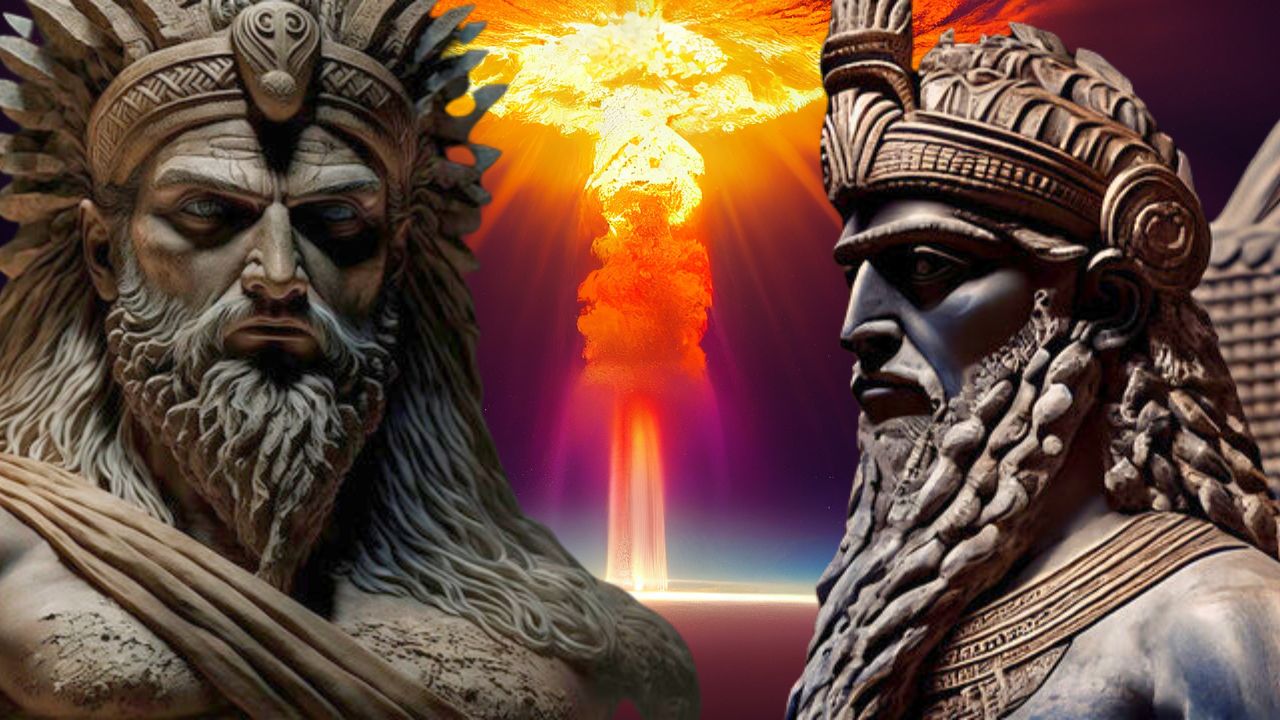
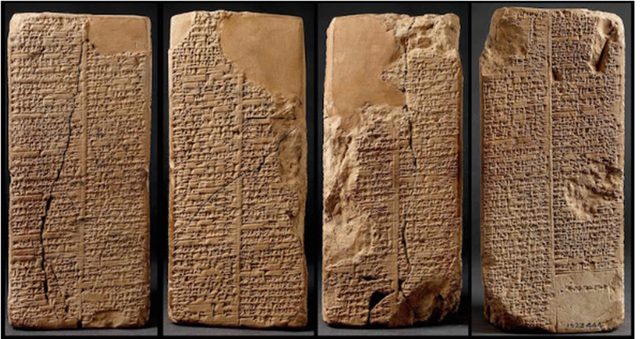
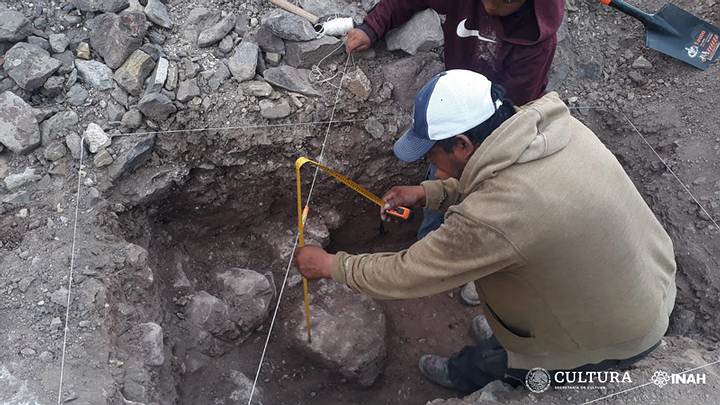
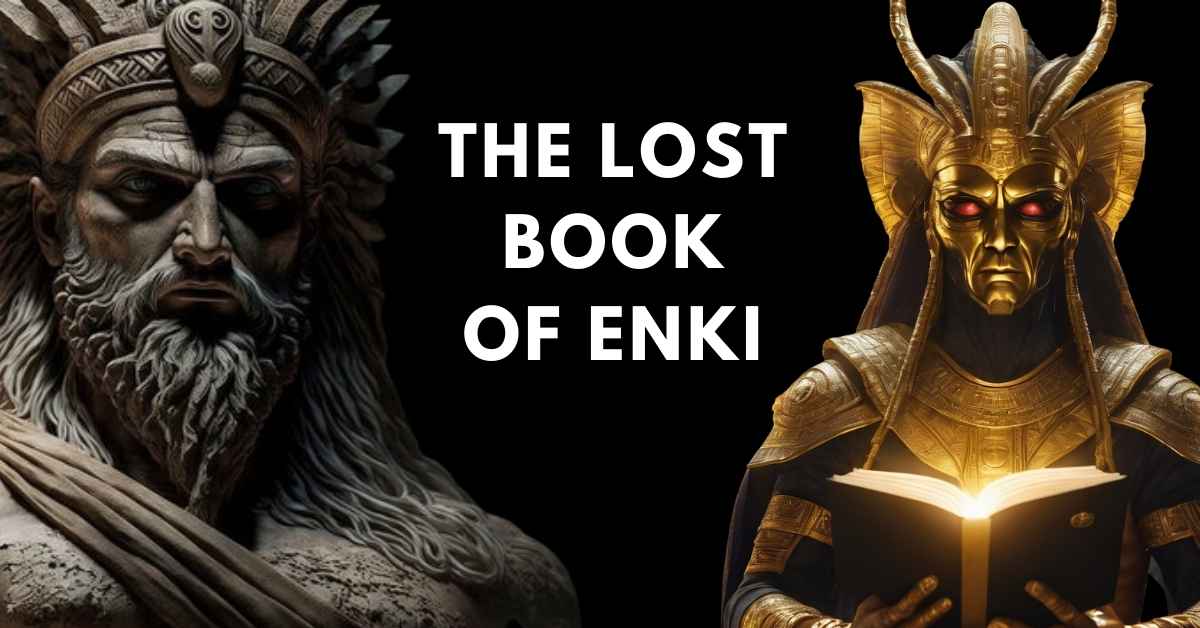
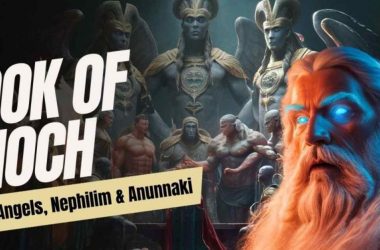

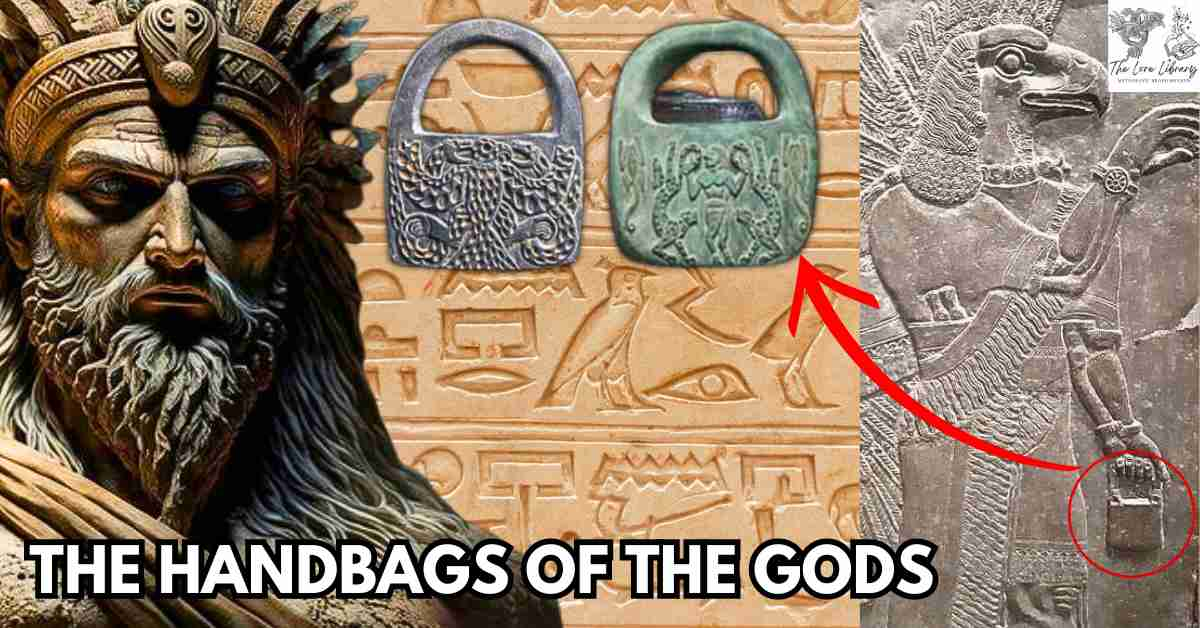
Ever since my first UFO, when I was nine, I have been obsessed with knowing more about what it is I see. It has consumed my life and still does to this day. I love these kinds of articles. Even though I have heard this information over and over.
I’m so glad my articles resonate with your lifelong fascination sparked by that childhood UFO encounter! I know that endless craving for knowledge about these mysteries all too well.
The ancient Sumerian legends of the Anunnaki “those who from heaven to earth came” have gripped my imagination for years. Even when familiar, I’m always amazed by the new layers of meaning I find with each retelling.
The origins feel so shrouded and the symbolism so rich, there’s an endless depth to explore together. I appreciate you joining me on this never-ending journey into captivating myth and folklore!
Be sure to also check out our YouTube channel and Facebook page for more great Lore Library content.
Hi there! I could have sworn I’ve been to this website before but after browsing through some of the post I realized it’s new to
me. Anyhow, I’m definitely delighted I found it and I’ll be
book-marking and checking back often!